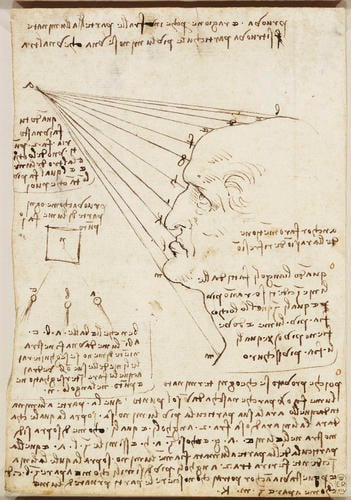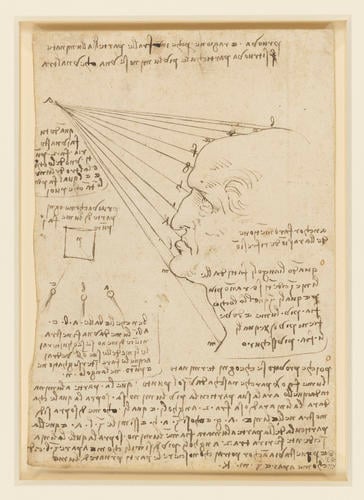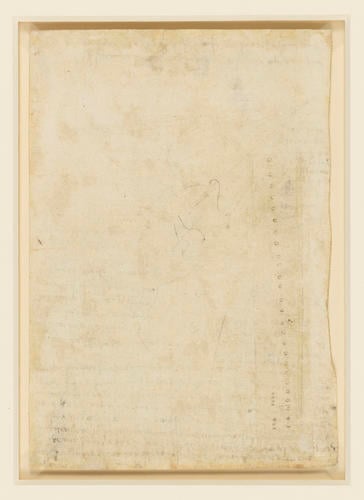-
1 of 253523 objects
The fall of light on a face c.1488
Pen and ink | 20.3 x 14.3 cm (sheet of paper) | RCIN 912604
-
A drawing of the head of a man, turned in profile to the left, intended to demonstrate how rays of light from a single point would fall upon his face. Also a diagram and many notes on the action of light.
Leonardo’s own paintings are notable for their elaborate treatment of shadows (chiaroscuro), and here he sets out the geometrical principles of light and shade. This page from a dismantled notebook explains that where the light falls perpendicularly on the object, it will be most strongly illuminated; where it falls most obliquely, the object will be least strongly lit; and where no light is received it will be completely dark.
During the 1480s Leonardo became increasingly interested in the scientific basis of painting – that a painting was not merely a picture, but an objective rendering of the observable universe. Building on his earlier knowledge of perspective, he started to study proportion and geometry, the theory of light, and the principles of anatomy, and hatched a plan to compile a treatise on painting.
Text adapted from Leonardo da Vinci: A life in drawing, London, 2018Provenance
Bequeathed to Francesco Melzi; from whose heirs purchased by Pompeo Leoni, c.1582-90; Thomas Howard, 14th Earl of Arundel, by 1630; probably acquired by Charles II; Royal Collection by 1690
-
Creator(s)
Acquirer(s)
-
Medium and techniques
Pen and ink
Measurements
20.3 x 14.3 cm (sheet of paper)
Markings
watermark: Six-petalled flower (cut), close to Briquet 6541.
Category
Object type(s)


